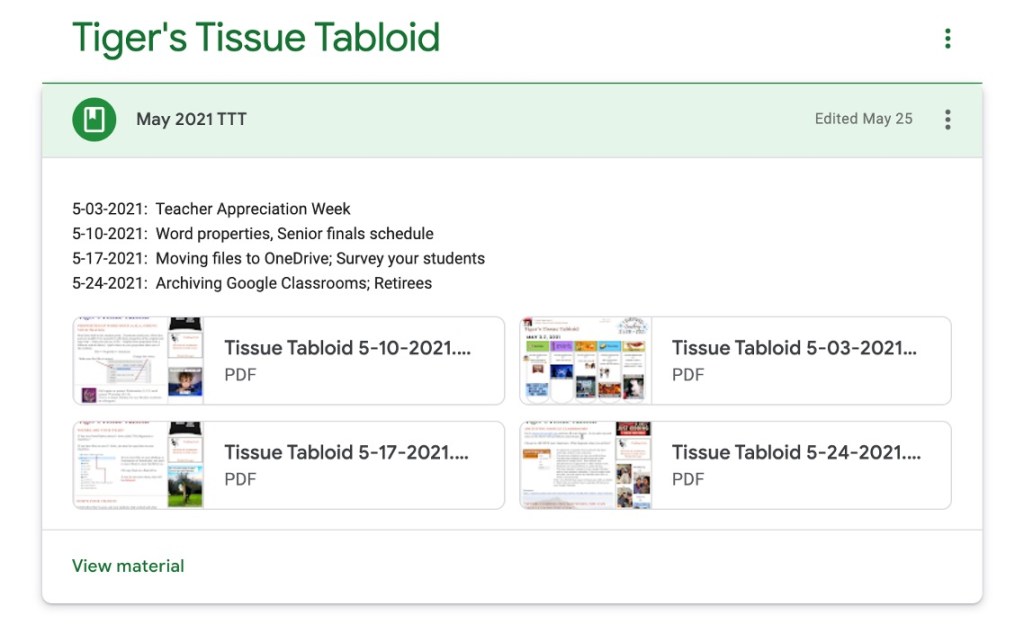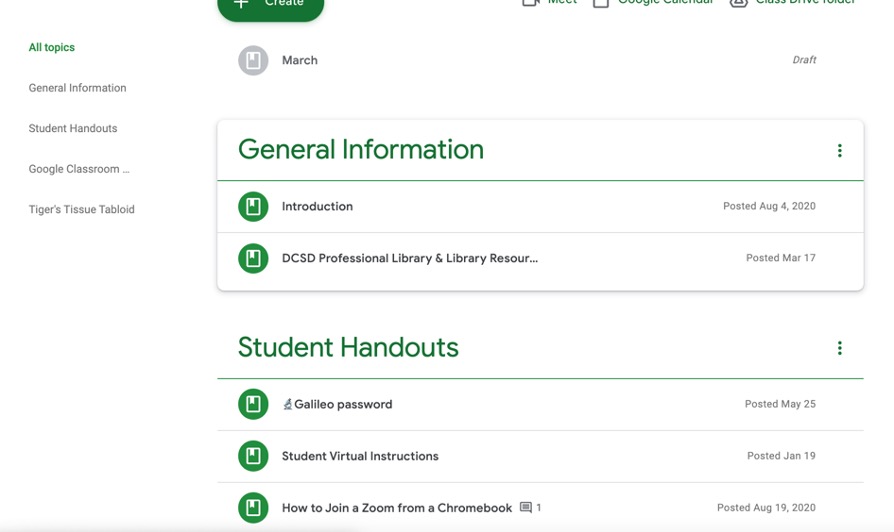Collaborating During the Strangest Year Ever
4June 19, 2021 by Dr. Robbie Barber
This post is Week 2 of 8 in the #8WeeksofSummer Blog Challenge for educators. The prompt for this week is: Describe your peer collaboration this year.
If there was ever a year in which we collaborated, this was it. Yes, there were isolated teachers but most of us reached out naturally to others. The only problem is that we weren’t actually physically together. (We were fully remote the first semester, teachers in person in January and students allowed to choose to come in March.)
Because we left in the middle of March, 2020, I converted my weekly “Tuesday Tickling Tech” sessions to an online format once a week. It quickly became evident that teachers and staff needed the check in. I couldn’t physically touch them but we continued through the summer and the entire SY21 to meet at the same time/ same place online every week. Sometimes, several people came to discuss problems, ask questions, or just listen. Sometimes one person came just to have someone to talk to. I needed this too. Is it collaboration? Absolutely.
In June 2020, I was invited to teach 2 half-day workshops (2 days, 1 session in the morning and 1 in the afternoon) on creating a Google classroom Media Center. I had created two classrooms for the workshop. One was for my “students” and one was for my “teachers” called THS Media Center and THS Faculty Classroom, respectively. As a side note, one of the reasons I enjoy teaching workshops is how much I learn from them. The group got into a discussion about the maximum number of students in a Google Classroom (GC). Immediately I saw a problem that meant I was going to have to create separate GC for each grade level. Crisis averted due to discussions with others. During the discussion, elementary teacher-librarians discussed the pros and cons of separate for each year or grouping them. The back-and-forth is exactly what we needed even though there was no “one true way.” It was wonderful and fun.
One teacher-librarian (the amazing Ashley Success) took her Day 1 homework assignment and created a GC for the faculty. But instead of calling it a ‘Faculty Classroom’ like I did, she called a ‘Faculty Lounge’. WOW! Do you see the difference those words made?!
Yes, I stole her idea and implemented immediately. How did it work?

Google Classroom Stream
I shared and blasted teachers with the join code for the classroom for months. Anyone could join at any time. We used the Stream to have conversations, upload files, provide links, etc.

Weekly Newsletter
The weekly one page newsletter (Tiger’s Tissue Tabloid), that is normally hung in staff bathrooms, was emailed every Monday morning to the entire staff. Then it was reposted in the GC so teachers could find a copy. It was organized by month and the one line summaries helped the teachers find the issue they were looking for.

Posted Materials
While I sent out information for students and teachers via emails, so did the IT dept. I created a section in the Faculty Lounge to help the teachers find these handouts. I also posted other teachers’ handouts or help for teachers.
There were so many collaborations during the school year. I joined the math department for their weekly meetings. I had monthly meetings with other high school librarians in the district. I met with the IB department. I did a faculty/ staff Stamped Book Club. To be clear, I did not and do not have all of the answers. It is collaboration because there is a give-and-take aspect to our discussions.
Why do teachers need to collaborate? According to Mora-Ruano et al. (2019), teachers get help with instruction-related issues, project-related issues, and problems-related issues. Each of these plays a part in improving student learning, though the first two do more for teacher job satisfaction than directly supporting students. The last is the driver for pushing a positive, direct improvement in student learning. “Collaboration among teachers is a force that positively influences the whole school community” (Mora-Ruano, et al., Introduction). Collaboration creates relationships. And, the relationships that teachers create improve their effectiveness in teaching students. It’s a win-win situation.
Who do you collaborate with?
Reference: Mora-Ruano, JG, Heine, J-H. and Gebhardt, M. (2019) Does Teacher Collaboration Improve Student Achievement? Analysis of the German PISA 2012 Sample. Front. Educ. 4:85. doi: 10.3389/feduc.2019.00085. Retrieved from https://www.frontiersin.org/articles/10.3389/feduc.2019.00085/full

Robbie,
I love that this post illustrates your helping heart. But *also* it shows educators that everyone can contribute awesome ideas and we should normalizing replicating and promoting what works!
LikeLike
Robbie, this is such a great post. I love the way you described collaboration and talking it out about the GC options and what you needed to do to make it work best for your situation. So true: “Crisis averted due to discussions with others.” I love those discussions so much! Together we are smarter.
I also love the idea of the Faculty Lounge in a Google Classroom. I see that you advertised the link for lots of weeks, but it was optional right? Did you find that certain people joined and got a lot out of it and others chose not to? What percentage of your faculty would you say participated? Thanks! Sorry for all the questions, but I’m fascinated with the idea, getting ideas. 🙂
LikeLiked by 1 person
To answer your questions about the Faculty Lounge, it was indeed optional. We advertised it for MONTHS. In the end, about 40% of the faculty joined it, though most didn’t check it regularly to have discussions. That’s okay, they knew where to get materials when they wanted it.
LikeLike
[…] we can collaborate more. Backing up someone online is a good start, but not enough. When I collaborate on research […]
LikeLike